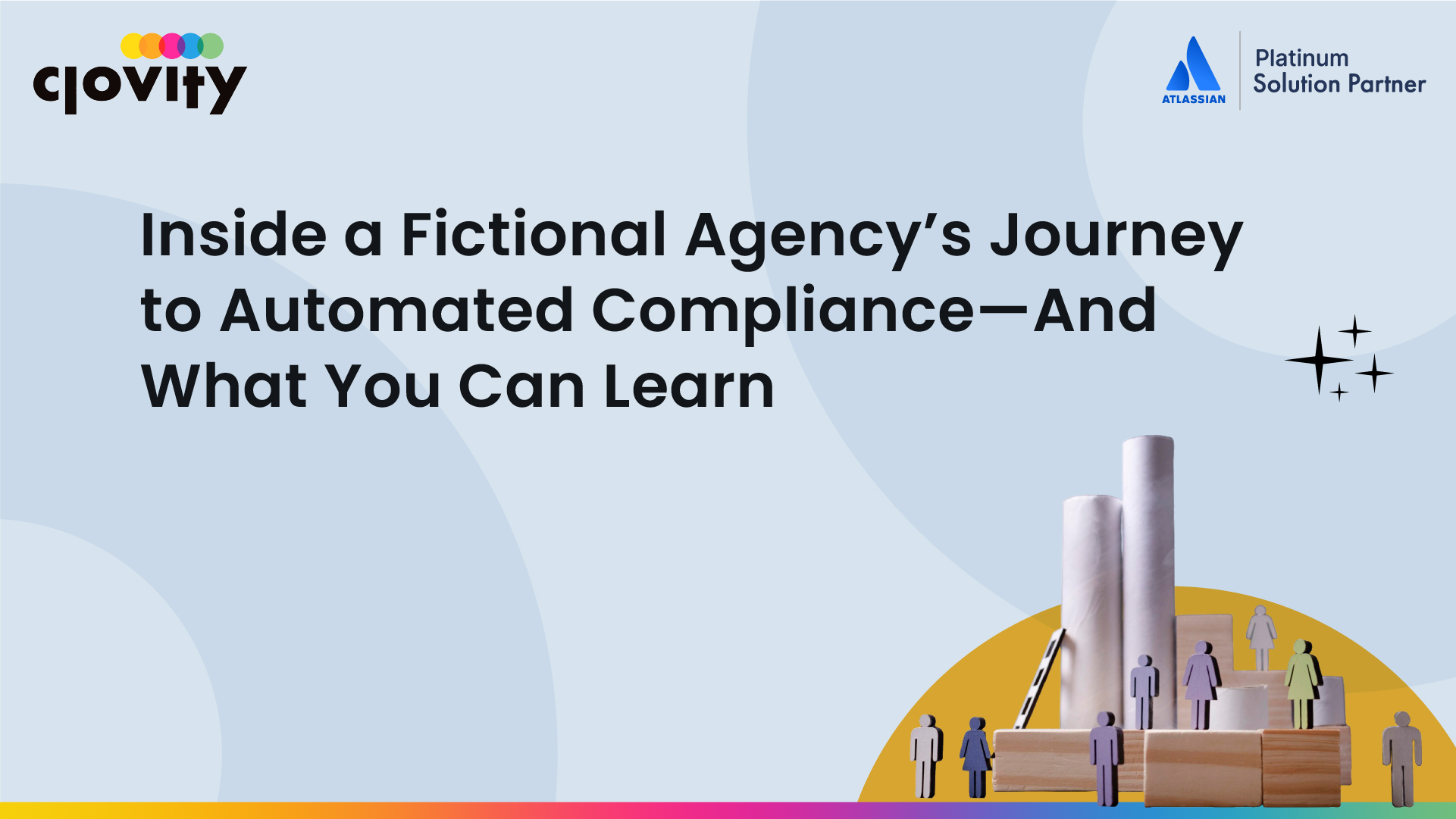Meet the fictional State Department of Innovation & Infrastructure (SDII)—a midsize agency responsible for statewide software upgrades, citizen data services, and internal IT modernization. With mounting pressure from regulators, aging toolsets, and limited visibility into daily operations, SDII’s leadership knew something had to change.
What follows isn’t just a story. It’s a mirror for many public sector IT teams—especially those navigating compliance frameworks like FedRAMP, NIST, or internal governance standards.
The Challenge: Too Many Steps, Not Enough Proof
When an internal audit uncovered approval gaps and inconsistent documentation, SDII’s CIO issued a directive: compliance needed to be integrated, not retrofitted. Project managers were using spreadsheets, engineers tracked progress in code repos, and approvals floated across inboxes.
The result? Missed sign-offs. Lost paper trails. Bottlenecks that were hard to find—until it was too late.
The Turning Point: Consolidating Around Atlassian Tools
Rather than investing in multiple niche tools, SDII decided to optimize their existing licenses of Jira and Bitbucket. With help from Clovity’s Atlassian Services team, they mapped out a compliance-first system that aligned with both internal processes and external mandates.
The goal wasn’t to move faster—it was to make every step visible, reviewable, and reportable as part of daily work.
What They Implemented
🗂️ Jira Workflows with Policy Gates
Each workflow was updated to include approval checkpoints—like security review, legal sign-off, or QA verification. Status transitions required documented input or attachment uploads.
🔐 Bitbucket Merge Checks
No code could move to production without:
- A linked Jira ticket
- Two reviewer approvals
- All builds passing in Pipelines
- No open critical vulnerabilities
This reduced shadow changes and ensured traceability from task to code.
📊 Real-Time Reporting
Jira dashboards were set up for compliance officers, showing:
- Tickets waiting on approvals
- Audit logs of completed transitions
- Time-stamped records of every change
Weekly reports became a formality—because the evidence was already in the system.
Results in 90 Days
Within three months, SDII had:
- Reduced audit prep time by 75%
- Standardized 90% of workflows across teams
- Linked every code deployment to a Jira issue
- Shortened approval cycles by removing manual follow-ups
More importantly, they built confidence—internally and with their auditors—that systems were working as intended.
Lessons for Your Agency
SDII may be fictional, but the strategy is very real. Here’s what any agency can take from this journey:
- Start with tools your teams already use. Compliance doesn’t require an overhaul—just structure.
- Design your workflow to reflect your policy. Don’t expect people to follow rules that systems can’t enforce.
- Make every action traceable. If it’s not in the system, it didn’t happen—at least in audit terms.
- Measure and adjust. Use dashboards to monitor where processes stall and where exceptions occur.
Final Thought
Compliance doesn’t have to be manual, reactive, or intimidating. It can be baked into the everyday actions your teams take—if the right systems are in place.
SDII’s story might be fictional, but the outcomes are attainable. Agencies across the country are finding that with the right setup, staying audit-ready becomes part of the rhythm—not a mad dash every quarter.
📧 Contact us at sales@clovity.com or visit 🌐 atlassian.clovity.com to get started today.


